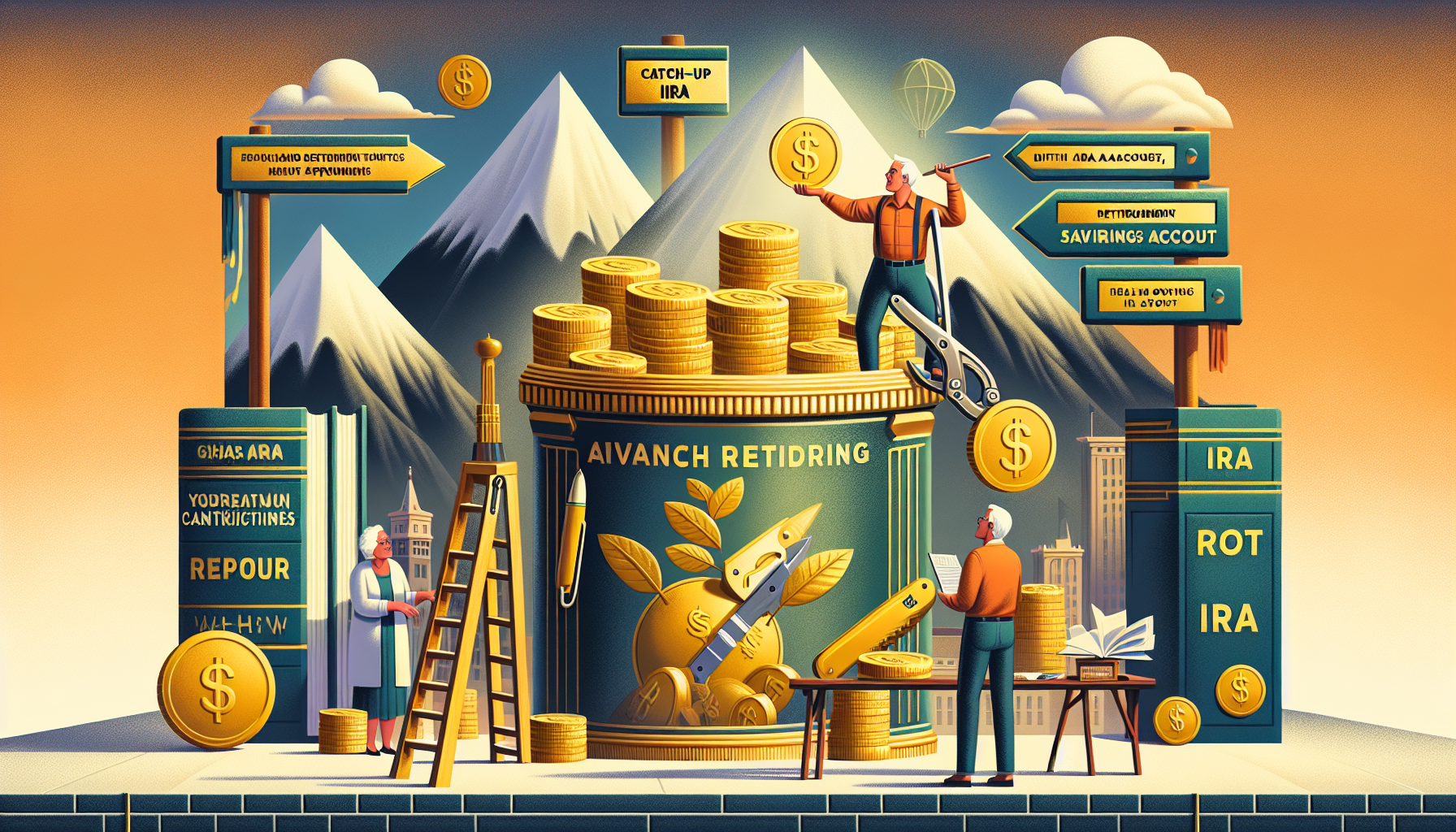Exploring Growth vs. Value Investing: Which Strategy Fits You Best? is a comprehensive course designed to demystify the world of investment strategies, specifically focusing on the comparative benefits and drawbacks of growth and value investing. This course aims to equip learners with the knowledge to make informed investment decisions that align with their financial goals and risk tolerance. Through a series of detailed lessons, participants will uncover the intricacies of identifying growth opportunities, recognizing undervalued assets, and strategically blending investment approaches for a balanced portfolio. Whether you’re a novice investor curious about building wealth or an experienced investor looking to refine your strategy, this course offers invaluable insights into navigating the ever-evolving financial landscape.
Lesson 1

Exploring the Fundamentals of Investing: Growth vs. Value
Embarking on your investment journey begins with a foundational understanding of the available strategies. Among them, growth investing and value investing stand out as pivotal approaches for investors. This article dives into the essence of both strategies to help you discern which might align best with your financial aspirations.
Introduction to Investment Strategies
Identifying your investment goals is crucial for crafting a strategy that suits your financial horizon and risk tolerance. While exploring savings, many lean towards investing as a means to potentially enhance their financial wellbeing. Among the myriad of strategies, growth and value investing are particularly noteworthy.
Growth Investing Defined
Growth investing seeks out companies anticipated to grow at an above-average rate compared to their industry or the market as a whole. Investors are often drawn to these high-potential stocks despite their higher price tags, betting on the companies’ continued success and Stock performance.
Understanding Value Investing
On the other hand, value investing focuses on finding undervalued stocks that are believed to be trading for less than their intrinsic or book value. These stocks are often overlooked or underappreciated by the market, presenting a unique opportunity for investors to buy in at a lower price and await market correction.
Key Considerations for Growth and Value Investors
- Market Trends: Both growth and value stocks respond differently to market dynamics. Understanding these trends can be crucial in deciding when to invest.
- Risk Tolerance: Growth stocks typically come with higher volatility, whereas value stocks might offer more stability but with slower growth potential.
- Investment Horizon: Your investment timeline can significantly influence your strategy choice, with growth stocks often seen as better suited for longer-term horizons.
Conclusion
Choosing between growth and value investing hinges on your personal financial goals, risk tolerance, and time horizon. By pondering these factors, you can embark on an investment path that aligns closely with your aspirations, creating a portfolio tailored to your financial growth.
Lesson 2

Delving Deeper into Growth and Value Investing Strategies
Choosing between growth and value investing can often feel like navigating a complex maze. Both strategies have their unique advantages and are tailored to meet different investor profiles. This guide will help you explore, understand, and ultimately decide which investment strategy, Growth or Value, fits you best. As we dive deeper, remember, the key is not only to acquire wealth but to align your investments with your financial objectives and risk tolerance.
Understanding the Essence of Growth Investing
Growth investing targets companies expected to outperform the market due to their potential for high Earnings growth. These corporations may not pay dividends as they usually reinvest earnings into further growth. The charm of growth investing lies in the anticipation of stock prices soaring as the company grows. However, this comes with higher volatility and risk, essential factors to consider for any investor leaning towards this strategy.
The Intricacies of Value Investing
In contrast, value investing focuses on uncovering stocks undervalued by the market. These stocks are characterized by strong fundamentals and are priced below what they are fundamentally worth. The magic of value investing is the prospect of the market recognizing the undervaluation and adjusting the stock price accordingly, leading to potential gains for the investor. This strategy requires patience and a keen eye for identifying such undervalued stocks.
Analyzing Market Trends for Investment Decisions
- Staying updated with market trends and economic indicators can significantly influence your strategy choice.
- Understanding sectoral shifts and consumer behavior patterns can offer insights into potential growth industries or undervalued sectors.
Merging Growth and Value for Diversification
While some investors may have a clear preference, others may find a blended approach appealing. Merging growth and value investing strategies can diversify a portfolio, potentially balancing the risk and reward. By allocating assets across both growth and value stocks, investors can aim for a more stable and potentially lucrative investment journey.
Building Your Investment Strategy
To effectively decide between growth and value investing or to blend both, start by evaluating your financial goals and risk tolerance. Charting a path that is in harmony with your investment horizon and objectives is crucial. Regularly reviewing and adjusting your strategy based on market conditions and personal financial changes will help keep your investment journey aligned with your goals.
In conclusion, whether you lean towards the rapid pace of growth stocks or the steady promise of value investments, understanding the nuances of each strategy is key. By carefully considering your personal investment style and financial objectives, you can navigate the investing landscape with confidence and clarity, propelling you towards your financial aspirations.
Lesson 3

Tailoring Your Investment Strategy: A Guide to Growth and Value Investing
Investing can sometimes feel like navigating through a dense fog – challenging yet exhilarating. This guide aims to shine a light on how to tailor your investment strategy, focusing on blending growth and value investing to meet your financial goals. Mastering this blend can optimize your portfolio’s performance, ensuring it aligns with your risk tolerance and investment horizon.
Blending Growth and Value Investing
Neither growth nor value investing needs to exist in isolation. Combining these strategies can provide a balanced approach, leveraging both the high potential returns of growth stocks and the stability of undervalued value stocks. This fusion not only diversifies your investment portfolio but could also minimize risk while capitalizing on the market’s ups and downs.
Risk Management and Portfolio Allocation
Effective risk management is paramount when integrating growth and value investing. By strategically allocating your investments between these two approaches, you can manage potential volatility. Consider your risk tolerance, investment goals, and the timeframe for achieving these goals. Diversifying your portfolio across various sectors and investment types can further mitigate risk and enhance potential returns.
Future-Proofing Your Investment Portfolio
As markets evolve, so should your investment strategy. Keeping abreast of market trends, economic cycles, and sector performance is crucial for adjusting your portfolio to maintain its growth and value balance. Regular reviews and adjustments in response to changing market conditions or personal financial goals ensure your investment strategy remains effective and relevant.
Regular Evaluation and Adjustment
Reviewing your investment strategy periodically is key to ensuring it continues to meet your needs. This may involve rebalancing your portfolio to maintain your desired allocation between growth and value investments or to adapt to changing financial goals and market conditions.
In conclusion, crafting a tailored investment strategy that blends growth and value investing is a dynamic, ongoing process. By considering your financial objectives, risk tolerance, and staying informed about market trends, you can navigate the complexities of investing with confidence. This balanced approach can not only bring financial rewards but also peace of mind, knowing your portfolio is well-positioned to adapt to the ever-changing investment landscape.
Exploring Growth vs. Value Investing: Which Strategy Fits You Best? concludes with a deeper understanding of the distinct yet complementary investment strategies of growth and value investing. This course has equipped you with the knowledge to discern between the two approaches, blend them effectively, and navigate the market with greater confidence. By balancing the high-reward potential of growth stocks with the stability and hidden opportunities within value stocks, you can build a diversified portfolio that aligns with both your financial goals and risk tolerance. To ensure you’ve grasped the key concepts covered, a 10-question quiz follows this conclusion, designed to test your understanding and readiness to apply these strategies to your investment decisions.
Test Your Knowledge With this short Quiz
Click here to copy your score to share on facebook!







